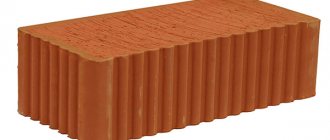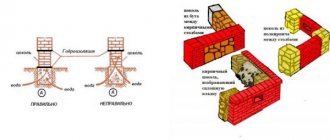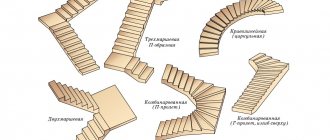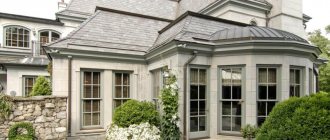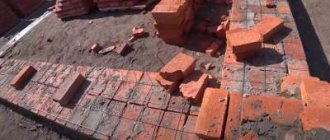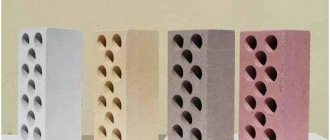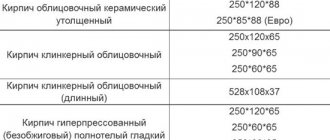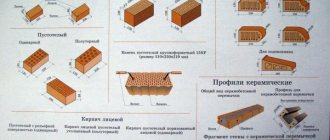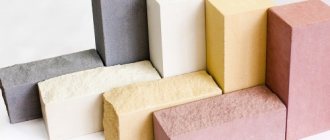In modern construction, with all the variety of finishing facade materials, it is almost impossible to find a suitable replacement for facing bricks. Houses and cottages decorated with brick cladding look luxurious, attracting the eyes of passers-by. Facing bricks have a smooth or corrugated surface without chips or cracks. The composition of facing bricks contains mainly only natural materials: clay, limestone, cement and dyes. The facing brick takes on all environmental influences and precipitation, so it must be strong enough, high density and durable. Using firing or hyperpressing technology, this wonderful finishing material is obtained. When constructing houses and cottages, different sizes of facing bricks are used; an unknowing customer may even get lost in the variety of possible options, however, all product dimensions are consistent with global standards and have their own nomenclature name, which indicates the size.
Standard sizes and weights
Facing bricks have different technical indicators: weight, appearance, cost and dimensions. In the Russian Federation, standards familiar to many builders have been adopted, clearly spelled out in GOSTs, so it’s quite easy to understand the variety of different sizes of bricks. According to GOST, the brick has dimensions of 250x120x65 mm, the first number indicates the length, the second the width, the third the thickness. These standard dimensions were established back in 1927, and have not changed since then and are used in any area of construction or repair. It is important to know that this standard applies to both facing and building bricks. Technologies, the composition of the initial clay-lime mixture, anti-frost or moisture-repellent additives, the color scheme or strength grade of facing or building bricks - all this may change, but the size will always remain standard:
- The double brick has dimensions of 250 by 138 mm.
- Single standard with dimensions 250x120x65 mm.
- Thickened brick with dimensions 250x120x88 mm.
The brick factory, at the request of the client, can produce custom-made facade bricks of any size. Of course, if we are talking about a large order, and not about 10 pallets, because to produce bricks of an unusual size, it is necessary to make a number of changes to the technological process, reconfigure the equipment and machines for molding cutting. This means that the production line will operate in a non-standard mode for the entire time required to produce a batch to order. For an existing production, making major changes to the production line and making trial runs for a few pallets is an unaffordable luxury.
It is noteworthy that even a non-standard size table for brick products is specified in modern GOST. Most often, there are orders for standard size 0.7 NF, which has dimensions of 250x85x65 mm; many contractors use it for restoration work on the facades of old buildings in order to reduce the load on the foundation, which is already many decades old. Typically, the weight of such bricks is from 3 to 5 kg, so that it is convenient for the mason to lift it with one hand for faster and easier masonry. The size of the brick clearly shows, even at the design stage, what the consumption of products will be per square or cubic meter of future masonry. Construction experts claim that the aspect ratios of standard bricks help achieve the planned flexural and compressive strength of the façade under actual operating conditions. This makes it possible to more evenly distribute destructive loads over the entire plane of the facade, increase longitudinal resistance to cracks and chips, and in the future extend the service life of the building by 1.2-1.5 times.
The size chart of brick types, according to GOST 530-2012, includes the following characteristics:
- 1 NF (Single), length - 250 mm, width - 120 mm, height - 65 mm;
- 0.7 NF, length - 250 mm, width - 85 mm, height - 65 mm;
- 1.4 NF (One and a half), length - 250 mm, width - 120 mm, height - 88 mm;
- 0.5 NF, length - 250 mm, width - 60 mm, height - 65 mm;
- 1.3 NF, length - 288 mm, width - 138 mm, height - 65 mm;
- 1.8 NF, length - 288 mm, width - 138 mm, height - 65 mm;
- 0.8 NF, length - 250 mm, width - 120 mm, height - 55 mm.
Red brick, sizes and varieties and defects
The dimensions of ordinary red brick are standardized by the requirements of GOST 530-2007, products are produced in the following standard sizes:
- Normal format, also known as single, the dimensions of an ordinary red brick are 250x120x65 mm;
- One and a half, thickened, in this case the thickness is increased, the remaining overall dimensions remain the same - 250x120x88 mm;
- Double, large format, overall dimensions – 250x120x138 mm;
- Modular, normal format, overall dimensions 288x138x65;
- “Euro” is a standard that came from Europe, has several types, the most famous size is 250x85x65 mm, this standard is also prescribed in GOST.
It should be noted that GOST allows the execution of bricks with deviations from the standard. Therefore, the dimensions of the red brick may differ slightly from the control dimensions.
“Effective”, also known as hollow brick, the structure of the ceramics is clearly visible
Separately, it is necessary to note wedge-shaped products intended for assembling vaults and arches; this type of product is heat-resistant and has a narrowed shape along the edges.
Kiln wedge brick
Dimensions of standard red brick
The dimensions of this building material are fully regulated by GOST; the height of the red brick may vary depending on the operating conditions and its purpose, within the limits and dimensions provided for by the system of state standards.
The dimensions of hollow and solid red bricks are similar; in this respect, only the scope of their use differs.
Slotted or hollow, it is actively used for filling openings in monolithic and frame structures, assembling walls, creating partitions, while solid is used under conditions of high loads: the foundation of a house, basement floors, load-bearing walls.
Dimensions of red facing bricks
Facing or facing bricks are used for external laying and decorative finishing of walls of buildings. The design and size of the facing brick is selected based on the project.
The size of a single facing brick is completely similar to the standard size - 250x120x65 or “Euro” 250x85x65 mm.
Dimensions and designations
Dimensions of red stove bricks
Kiln bricks are distinguished from ordinary bricks by their ability to withstand the effects of open flames and high temperatures for a long time; their area of operation is the creation of devices operating under high temperature loads, the lining of such structures and equipment operating under the influence of open flames. There are refractory red and fireclay bricks.
The price of red stove brick is usually higher than that of ordinary brick. This is a result of the fact that different raw materials and technologies are used to manufacture these products.
The overall size of stove bricks, unlike other types, can be divided into two types:
- Rectangular products with dimensions of single and thickened bricks 250x120x65 mm and 250x120x88 mm;
- Wedge-shaped products in accordance with GOST 8426-75, products of special shape: radial-longitudinal and radial-transverse are distinguished.
Red brick for the foundation, dimensions and features
To lay a foundation, bricks must have increased moisture resistance parameters and reduced water absorption, since the foundation is most susceptible to moisture. The overall size of ordinary red brick is selected based on the technical requirements of the house project. In addition, the products used to construct the foundation must have high load-bearing characteristics, due to the fact that the foundation accounts for most of the load-bearing load of the structure.
When choosing a material for basement floors, you need to pay attention to the choice of material according to physical parameters: frost resistance, moisture permeability and others. Strength is also extremely important; the product in the masonry will bear the entire weight of the structure
For the foundation, it is necessary to select high-quality, well-burnt material, without defects arising from violations of the technology of its production and storage.
It is recommended to use ordinary solid bricks to construct the foundation. Dimensions – 250x120x65 mm single and 250x120x88 thick. The double size of red brick for the plinth is rarely used.
Fold down the oven? Easily!
Types of facing bricks
Finishing brick is associated with the beautiful facade of a massive, tall building. But, in addition to the external decoration of a residential building or office building, pillars and columns of fences enclosing structures are built from such products; arches, gazebos, small architectural forms, even benches in parks are decorated with facing bricks. Any brick has a rectangular shape, of which two sides have a high-quality decorative surface - a spoon and a poke. This is the face of the product, that part of it that will look out onto the street.
There are several main types:
- Ceramic - exists with internal cavities, hollow and solid. The hollow one has less weight, and when chosen, the load on the foundation will be less.
- Clinker brick is the densest brick; due to the technological features of production, it has a very dense structure and has one of the highest moisture and frost resistance indicators.
- Hyper-pressed - it contains only clay and sand, in its cut it is very similar to natural stone due to the beautiful expressive chipping.
- Silicate brick is the cheapest brick, but in decorative terms it is inferior to other options.
Main types of products
Most blocks have standardized dimensions - 250x120x65 mm. This is the size of a single brick. Based on manufacturing methods, the following types of products can be distinguished:
Image 1. Ceramic facing bricks have a rich red color.
- ceramic;
- clinker;
- hyper-pressed;
- silicate.
Almost everyone is familiar with ceramic building materials. It is usually red in color. It can be solid and with voids, which make the blocks lighter and increase the thermal properties of the material (image No. 1). Surfaces are given different shapes and colors in factories. The edges can be smooth or matte. Dyes are applied to the entire surface or only to the front sides of the product. A glazed version is available to create a mosaic surface.
Image 2. Hyper-pressed facing bricks can withstand heavy loads.
Clinker brick is a version of its red facing counterpart. It has a high degree of strength and wear resistance. It is used for cladding the basement of buildings, for paving sidewalks and paths, for framing door and window openings. Brick is made by firing special grades of clay at high temperatures. The product has not only durability, but also high thermal conductivity. There are specimens measuring 528x108x37 mm. The cladding made with this material looks fresh and original.
Hyperpressed brick is made using a non-firing method (image No. 2). The mass, without sand and clay, is pressed under very high pressure. Cement and limestone are used as binding components. A coloring pigment is added to add color. Externally, the product resembles stone with its torn chips. The material is well processed, has high frost resistance and perfectly correct geometry.
Image 3.4. Sand-lime and red bricks are also used for cladding buildings.
Sand-lime brick is used less and less today. Its decorative properties are very controversial. Previously, it was widely used for finishing buildings (image no. 3). The size 250x120x65 mm or 250x120x88 mm continues to be in some demand. Less often they buy the size 250x120x138 mm.
The classic red brick is in greatest demand. Although its color can range from peach to chocolate (image no. 4). This material is not afraid of any atmospheric vagaries. It protects and strengthens the building well. Has excellent heat-shielding and sound-proofing properties. Its service life is several generations of residents. Brick is environmentally friendly and safe for human health.
Ceramic brick
Ceramics is one of the most ancient materials for construction and the manufacture of various household items. The basis is ordinary red or white clay. To produce ceramic bricks, or ceramic stone as it is also called, modern equipment, automatic drying lines, and high-tech kilns are used, but the main stages of production remain the same as 200 years ago. First, the clay is cleaned, then at the molding stage, the shape of the future facing brick is obtained from a shapeless heap, then the most responsible and important stage is firing. Ceramic brick is the most environmentally friendly and biologically inert material in construction, with a calm radioactive background and does not contain any harmful impurities. Ceramics are not afraid of frost, do not absorb excess moisture, do not rot and are vapor permeable.
Advantages:
- fire safety;
- excellent sound insulation;
- able to withstand large temperature changes without damage or cracks;
- good resistance to mechanical loads;
- There is always a wide range of colors, sizes and prices on the market;
- It is easy to work with thanks to its smooth geometry.
Ceramic facing bricks always have a uniform color; chips and cracks are rarely found on its surfaces.
The disadvantages include two things:
- increased cost; if the clay is poorly purified or the production technology is violated, the finished product
- may be fragile, but this point relates to the problem of choosing a quality manufacturer.
The most common size is single, 250x120x65 mm. The weight of ceramics, depending on the dimensions, ranges from 2.5 to 6 kg.
How does the size of the facing brick affect the size of the plinth?
.
Knowing the standard dimensions of facing bricks helps to calculate the dimensions of the plinth required for cladding. It must be taken into account that there should be a distance of 2-3 cm between the insulation layer and the facing brick, which is necessary for ventilation.
This will help prevent moisture buildup. To achieve the same goal, between every 4-5 bricks in the first row a seam is left unfilled with mortar.
After all the work has been completed, the plinth should protrude a few centimeters so that the wall has something to rest on. If, after the calculations made, the plinth turns out to be not wide enough, then it is increased before starting the facing work.
HOW TO CHOOSE A FACING BRICK
Today there are a large number of its forms on the market. The most common are the following:
- wedge-shaped;
- trapezoidal;
- twisted;
- figured.
Usually the choice is made based on the purposes of construction. For a low-budget option, for example, non-fired brick is perfect. Ceramic brick will allow you to realize the most bizarre ideas. And special strength can be obtained through the use of clinker type. The most popular is the type with two or one beveled corners, a figured “pumpkin” or one that matches the “wild stone”.
- Behavior in local climate
In fact, it is simply ideal for our climate, as it has
increased frost resistance and low moisture absorption. But that’s not all: the absorbent properties of this material make it possible to prevent the passage of numerous harmful substances that enter our home from the outside. Rain is a good help in this, during which a certain cleansing occurs.
- Cost of facing bricks
Of course, the price of such a brick will differ significantly from the cost of a regular one. But within the proposal itself, the cost will be determined by the following parameters - strength, frost resistance, water absorption, hollowness and weight. For example, one of the most popular facing building materials for cottages—red brick—has the following characteristics: compressive strength ranges from 150 to 200 kgf/cm2, frost resistance has one hundred cycles, water absorption is 8%, hollowness will be a third of the entire form, and the weight and It will be even lower than the standard - a little more than two kilograms.
Clinker brick
Clinker, like ceramic bricks, is made from red or white clay, shaped and fired in special kilns. However, the firing temperature is prohibitive - 1200-1400 degrees. At such temperatures, clay particles strongly sinter together, and because of this, the maximum density of the product is achieved. All kinds of colors appear due to pigmentation. To ensure that the color is uniform and there are no differences in shades, manufacturers use a standard formula for adding coloring additives. Clinker facing bricks can be solid or hollow.
Advantages of clinker:
- minimal water absorption;
- resistant to temperature changes;
- does not fade in the sun;
- a wide selection of shades and textures of the front surface;
- increased service life due to the very high density of the product;
- good mechanical strength.
Manor paths and terraces are often made from clinker bricks; in a word, it is used where the influence of precipitation and the external environment is most aggressive. The increased density of clay particles allows it to remain very durable for a long time and withstand up to 70 freeze-thaw cycles without visible damage.
There are also disadvantages:
- heavy weight, serious load on the foundation of the building;
- high price.
It is better to entrust the installation of clinker to professional masons. You should not lay clinker in hot weather, when the walls are very hot; moisture from the masonry mortar may dry out before it penetrates the brick structure and the masonry will not be as strong. The weight of clinker, depending on the size, is from 1.5 to 6 kg.
Brick and stone
Documents containing building codes and standards provide a clear definition of what a brick is.
It is based primarily on the size of the product: there is a single brick - 250x120x65 (mm), and a thickened one - 250x120x88 (mm). All products larger than these are called stones in regulatory documents. Bricks can be solid or have voids, stones can only be hollow.
The increase in the size of ceramic blocks for masonry was dictated by the desire for greater speed in the construction of walls.
This has led to the fact that today the rational use of bricks of standard sizes makes sense only for cladding; it is impractical and uneconomical to build the entire mass of the wall from artificial stones of small sizes. For this purpose, a large number of different multi-hollow, porous ceramic blocks are produced. Therefore, it is the size of the facing brick that is most often meant when mentioning single or thickened (sometimes called one-and-a-half).
Hyperpressed brick
The only type of brick that is made by semi-dry pressing from organic materials - limestone, shell rock. A beautiful chip, similar to natural stone, is obtained mechanically. The result is a product with an unusually beautiful relief, which is not repeated on other types. A rich range of colors is obtained thanks to dyes.
Pros:
- excellent geometry of finished products;
- Quite good indicators of frost and moisture resistance.
Minuses:
- Over time, it may change color, fading in the sun, but not earlier than 5-7 years;
- cracks and chips may appear due to thermal expansion;
- heavy, high requirements for the foundation;
- vapor-tight, an air gap in the masonry is required.
The standard and most popular size is 250x120x65, weight 4.5 kg.
Private and front
Artificial stones for the bulk of erected walls now look so that it is impossible to talk about them as bricks. Ordinary, or, as it is called, simply building brick loses its relevance if its size is the same as the standard size of the facing brick. Multi-hollow or porous stones replace several pieces of ordinary bricks in volume, but weigh significantly less.
A brick classified by the manufacturer as a facing brick with a smooth surface must have at least two front faces (most often these are a poke and a spoon). This means that they have no chips, cracks or foreign inclusions, they are uniform in color.
Sand-lime brick
The silicate facing material consists of sand, lime and water. If the proportions are violated, the product will turn out fragile and will not gain strength, which is why it is so important for the manufacturer not to violate the production technology and proportions of raw materials, as well as to maintain the equipment in high working condition. To obtain the design density, the brick is pressed.
Advantages:
- high biological stability;
- good sound insulation;
- ease of installation;
- low cost due to low production costs;
- You can use any mortar.
Very high-quality sand-lime brick geometry is obtained through production in strict accordance with accepted standards. It is frost-resistant and can withstand several dozen freeze-thaw cycles without loss of quality.
But, unfortunately, this material is not without its drawbacks:
- water absorption 7-9%;
- high thermal conductivity;
- heavy weight, 30% more than ceramics, with all other parameters being equal.
Dimensions correspond to the standard, weight from 2.7 to 6 kg.
Brick-like facing tiles
Tiles can be called a worthy alternative to brick itself due to an easier installation process, as well as lower costs for material and preparatory work. In general, tiles can be quite varied, which changes the type of raw materials used, as well as the preparation technology.
The size of brick facing tiles greatly depends on the raw materials.
So for decorative concrete tiles the thickness is 24 mm, and for clinker or ceramics from 8 to 14 mm. The dimensions strongly depend on the type of imitation and the desired size of the brick itself:
- single: 250×65 mm;
Single
- one-and-a-half: 250×88 mm;
One and a half
- double: 250×120 mm.
Calculating the number of required tiles is easier, since the manufacturer indicates the number of pieces per 1 m2. To create the ceramic brick effect, low-melting clay is used, which is processed at a low temperature.
At the same time, the cost is quite reasonable, since firing takes only 2 hours, and the aesthetic appearance is excellent.
Clinker tiles are made from refractory types of slate, requiring long firing (36 hours) and high temperature (1300 °C).
The product turns out to be of higher quality, more beautiful, but at the same time expensive.

